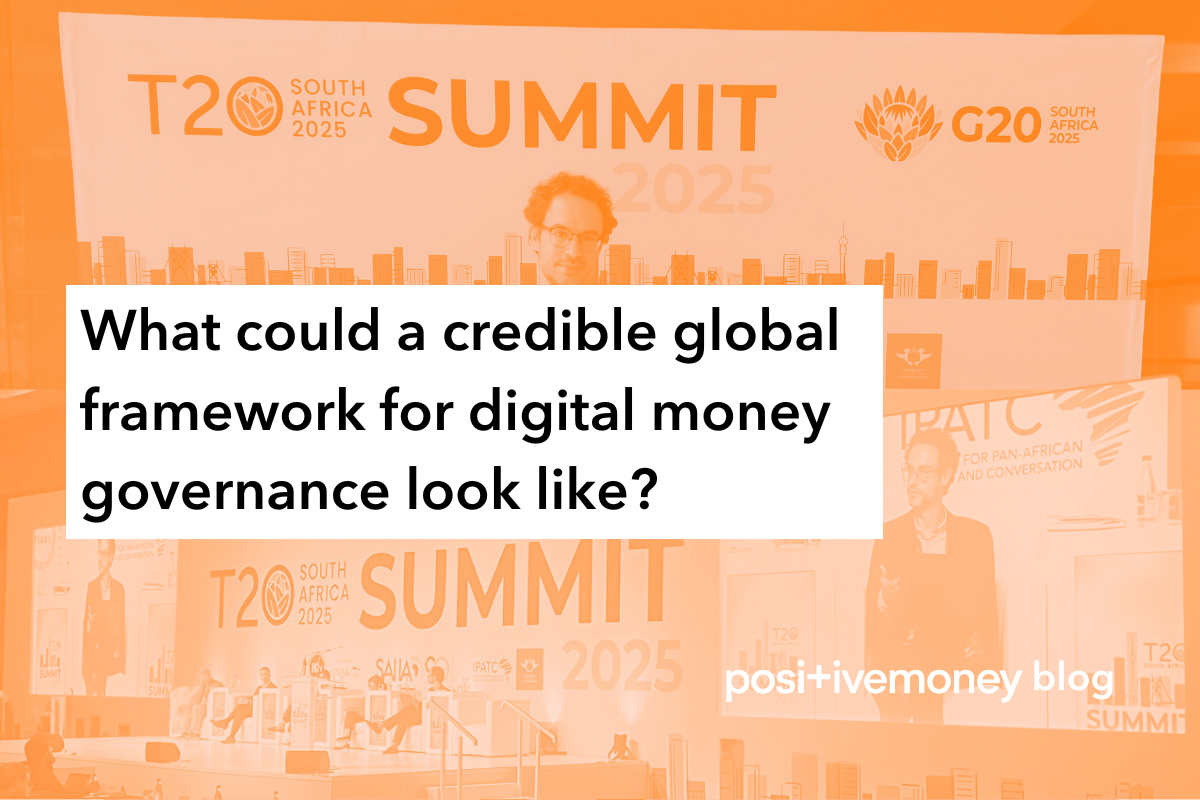
The future of moneyGlobal
2 December 2025
Singapore has declared itself a leader in green finance, but does this claim stack up? This article is part of an ongoing series exploring green central banking in East Asia.
In January 2024, Chia Der Jiun, the Managing Director of the Monetary Authority of Singapore (MAS) heralded the country as a ‘leading sustainable finance centre’ in Asia and beyond. Speaking at the launch of the Singapore Sustainable Finance Association (SSFA), Chia Der Jiun highlighted the Finance for Net Zero Action Plan implemented by MAS, the country’s green bonds market, and its vibrant research and development community around sustainable finance, as indications of the country’s leading status in this area.
MAS provides the integrated functions of both central bank and financial regulatory authority in Singapore. Contrary to movements around the world towards increased central bank independence since the 20th century, MAS does not have formal independence from the Singapore government. Instead, it falls under the purview of the Prime Minister’s Office, and the Chairman and other board members are drawn from government ministries.
It should be noted, however, that the previous Managing Director of MAS, Ravi Menon, has stated that during his tenure, the Singaporean government always supported MAS, but never pressured it to take certain policy positions. While its institutional set up may differ from many other central banks, MAS’ central policy objective is no outlier. It is tasked with conducting monetary policy to “maintain price stability conducive to sustainable growth of the economy”.
This article assesses Singapore’s progress in green central banking through focusing on two major action plans implemented by MAS in the last five years, and identifies the next steps the central bank needs to take to live up to its identity as a green finance leader.
2019 saw an important landmark for green central banking in Singapore, as MAS published the Green Finance Action Plan. The Plan established the objective of making Singapore a leading green finance centre in the region, through three strategies: building resilience to environmental risks, developing green finance markets and solutions, and building the requisite capabilities to encourage green FinTech innovation.
In line with the first of these strategic priorities, MAS placed significant emphasis on developing guidelines and taxonomies which measure and disclose environmental risks facing financial institutions. This involved MAS convening the Green Finance Industry Taskforce (GFIT) from 2019 to 2023, formed by “representatives from financial institutions, corporates, non-governmental organisations, and financial industry associations”.
In December 2020, the GFIT launched the Environmental Risk Management Guidelines (ENRM), a regulatory framework for financial institutions which came into effect in June 2022. Positively, alongside climate change issues, the ENRM’s definition of environmental risk incorporates other issues that are under-acknowledged by the financial sector, such as biodiversity loss and land use change.
On the other hand, the ENRM does not account for the impact of financial institutions’ own actions on environmental risks; for example, choosing to invest in companies expanding fossil fuel production, or deforestation. In other words, the framework does not take a ‘double materiality’ perspective, but instead focuses on how financial institutions can limit their own ‘exposure’ to environmental risks, rather than playing an active role in mitigating these risks.
Another major feature of the Green Finance Action Plan, launched in November 2019, was the establishment of a Green Investment Program (GIP). The GIP provides US$2bn to be placed with external asset managers that demonstrate a commitment to “developing green markets and managing environmental risks…[and] directing capital towards investments that have a better green profile”. This reflects the high degree of trust and agency that the Green Finance Action Plan gives the private sector to lead on financing green transition, as opposed to MAS itself taking a more active steering role, through credit guidance, for example.
A final feature of the Green Finance Action Plan that can be mentioned here was a liquidity facility which provided low-cost funding (0.1% and 0.5%) for financial institutions to grant ESG loans to Singapore based companies in all sectors, to meet their working capital and operational cash flow needs. This lending scheme provides an example of a central bank policy (supporting short-term liquidity needs) that works in tandem with national government (supporting long-term infrastructure projects through green bonds) to increase investment in green transition.
In April 2023, MAS launched the Finance for Net Zero Action Plan (FiNZ), to mark a new phase of work building on the Green Finance Action Plan. A key feature of FiNZ is a widening of MAS’ focus to include ‘transition finance’, as well as ‘green finance��’. MAS sees transition finance as relevant to activities that cannot yet be considered green, but have the capacity to transition towards this, such as Singapore’s existing geothermal, hydropower, and bioenergy plants.
One component of FiNZ is a Sustainable Loan Grant Scheme (SLGS) to support companies by covering up to S$125,000 of expenses involved in “engaging independent service providers to validate the sustainability credentials [of] eligible green, social, sustainability, sustainability-linked as well as transition loans”.
Another feature, launched in December 2023, is a ‘Transition Credits Coalition’ (TRACTION), which brings together 30 partners across “carbon credit services, energy financing, project development, risk management and non-governmental organisations”. TRACTION has three objectives: support high-integrity transition credits generation, enable transition credits transaction scalability, and bolster buyers’ confidence and trust in transition credits. Also, to add to the ENRM (mentioned above), MAS published guidelines on “Transition Planning for a Net Zero Economy”, which maintain ENRM’s broad focus on climate, nature and biodiversity risks.
Finally, in December 2023, MAS launched the Singapore-Asia Taxonomy for Sustainable Finance. The Taxonomy constitutes a voluntary framework which aims to guide investment towards greener activities by “defining science-based and robust technical screening criteria for economic activities and projects that are aligned with Singapore and the region’s overall environmental objectives”. MAS claim this Taxonomy to be “the world’s first to pioneer the concept of a ‘transition’ category, in recognition of Asia’s needs.” A question remains, however, as to how the Taxonomy will operate in harmony - or perhaps, tension - with the more recently published ASEAN Taxonomy for Sustainable Finance Version 3, given that both aim to have influence throughout Southeast Asia.
Over the last five years, MAS has implemented a broad array of green finance policies and actions that span across the four domains analysed in Positive Money’s Green Central Banking Scorecard: research and advocacy, monetary policy, financial policy, and ‘leading by example’. Notable strengths in MAS’ approach, which connect to recommendations for central banks that we have laid out in the Scorecard, include a recognition of environmental risks beyond climate (such as biodiversity loss), the establishment of green lending schemes, and the engagement of a range of societal stakeholders in the development of its policies and actions.
There is reasonable justification, then, for Singapore to refer to itself as a leader in the current green finance landscape. However, this leadership remains relative to the existing international paradigm of central banking, rather than exemplifying the scale of action from central banks that will be required to halt the escalating climate and ecological crisis.
A shortfall of MAS’ approach to green central banking, which is emblematic of this prevailing paradigm, is the high degree of trust it places in the private sector and fintech development to lead the green transition, when provided with nudges through monetary policy and financial regulation. In the context of climate and ecological crisis, it is important for central banks to move beyond problematic notions of ‘market-neutrality’, which end up favouring the status quo of industrial arrangements. A level of action commensurate with halting climate and ecological breakdown is unlikely to emerge from a private sector led approach to green finance. MAS’ integration with the national government means it is well-placed to deepen its coordination with fiscal policy and green industrial strategy in order to further uplift the scale and speed of climate and nature action in Singapore.
In line with our recommendations provided in the 2024 Green Central Banking Scorecard, important next steps for MAS to strengthen its green finance leadership must include: implementing a double materiality approach which recognises how financial institutions’ own actions contribute to environmental breakdown; strengthening its asset purchase programmes and collateral frameworks by positively screening for green assets and negatively screening for environmentally harmful assets; and crucially, taking a more active role in steering finance away from ecologically damaging activities, through the use of - for example - capital requirements and limits on ‘dirty’ lending.
This article is part of our ongoing series exploring green central banking in East Asia.
